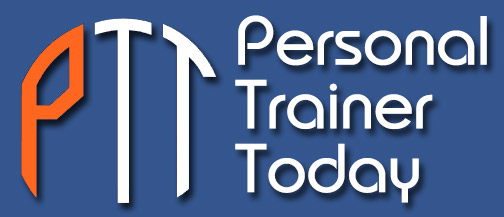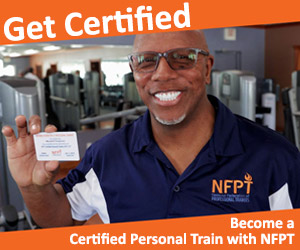In my previous article, I explored the research surrounding behavioral change and its impact on long-term health and vitality, particularly through Dr. Gabrielle Lyon’s (2023; 2022) Muscle-Centric Medicine (MCM) paradigm. Now, I aim to shift the focus toward a more reflective and opinion-based exploration, emphasizing the importance of mindset in sustaining health-promoting behaviors. While knowledge of resistance training, proper nutrition, and self-care is essential, transforming these practices from mere “shoulds” into absolute “musts” requires a significant psychological shift. Drawing inspiration from Tony Robbins’ (2020; 2008) motivational insights, James Clear’s (2018) Atomic Habits, and Gay Hendricks’ (2009) concept of upper and lower limits, this piece reflects on how clients can effectively commit to lasting health behaviors by blending psychology, personal conviction, and tailored strategies.
Turning “Shoulds” into “Musts”
Tony Robbins (2020; 2008) often emphasizes that the secret to lasting behavior change lies in shifting a behavior from something you feel you “should” do to something you “must” do. This transformation happens when individuals infuse their goals with deeply personal significance, making them feel non-negotiable. For example, a client may initially see strength training as a “should” simply because it’s beneficial for their health. However, by reframing the goal—such as emphasizing its importance in setting a positive example for their children—the behavior is anchored to a powerful motivation, turning it into a must.
This change ties closely to the pleasure-pain paradox: people are driven by the pursuit of pleasure and the avoidance of pain. To spark lasting behavior change, clients need to link more pain with inaction than with the necessary steps to reach their goals. At first, skipping workouts might seem like a relief from discomfort, but reflecting on long-term consequences—such as a loss of independence, declining health, or diminished self-esteem—sharpens the pain of inaction. Conversely, associating strength training with pleasurable outcomes, like boosted confidence, increased energy, and greater physical capability, strengthens the commitment to action.
Breaking Through Upper Limits and Raising the Floor
In The Big Leap, Gay Hendricks (2009) describes upper limits as subconscious ceilings that prevent individuals from achieving their full potential. These limits manifest as beliefs like “I’m too old to build muscle” or “I don’t have the time to prioritize health,” which lead to self-sabotage. Helping clients identify and challenge these limiting beliefs is vital. For instance, reframing the narrative around aging with evidence that muscle growth is possible at any stage of life can empower clients to push past their perceived limits.
Hendricks also underscores the importance of lower limits—the baseline behaviors clients set for themselves. Raising this floor can ensure consistent progress, even during challenging times. For example, a client who sets a minimum goal of two workouts per week rather than sporadic sessions ensures continued engagement. Fitness professionals can encourage clients to identify both their upper and lower limits and work to expand their potential while raising their baseline expectations.
The Power of Identity
James Clear (2018) emphasizes that the most enduring behavior changes occur when they align with identity. Instead of focusing on what to do, clients should focus on who they want to become. For instance, rather than merely trying to “exercise more,” a client who identifies as “an athlete” or “someone who values strength” is more likely to maintain behaviors like resistance training and proper nutrition because these actions are integral to their self-concept.
Clear illustrates this with an example of a smoker trying to quit: the shift from saying, “I’m trying to quit smoking,” to “I’m not a smoker,” reinforces a new identity. Similarly, in the MCM paradigm, helping clients adopt empowering identities such as “I prioritize my health” fosters intrinsic motivation, making behaviors like resistance training non-negotiable.
Practical Tools for Behavior Change
Clear’s (2018) Atomic Habits provides practical strategies to support lasting behavior change. These tools, combined with Robbins’ motivational techniques and Hendricks’ insights, create a powerful framework for clients.
Habit Stacking: Habit stacking involves attaching a new behavior to an existing one. For instance, a client might pair resistance training with their morning coffee ritual, using the consistency of the existing habit to anchor the new one.
Commitment Devices: Commitment devices increase accountability and harness the pleasure-pain paradox. A notable example is a high-end client and a devoted Red Sox fan. Struggling with consistency, he agreed to a commitment device: if he didn’t adhere to his fitness and nutrition program for two months, he would donate $2,000 and become a diamond member of the Yankees fan club. The thought of aligning with his team’s rival created a powerful motivator that ensured adherence.
Designing the Environment: Clear (2018) highlights the importance of making desired behaviors easy, obvious, and rewarding while making unwanted behaviors challenging, hidden, and painful. For example, clients aiming to increase protein intake can prepare visible, pre-portioned meals to encourage convenience. Conversely, clients trying to reduce unhealthy snacking can store indulgent foods out of sight and make access more effortful.
Setting Incremental Goals: Avoiding the “all-or-nothing” mindset is essential. Flexible goals, such as aiming to lose 3–5 pounds rather than a rigid 4 pounds, increase the likelihood of success by providing a range that accommodates variability (Höpfner & Keith, 2021). This approach helps clients view progress as a series of choices rather than a winner-takes-all outcome, reinforcing the idea that each healthy action is a vote for the person they want to become.
Anchoring Worthiness in the Client’s Journey
A key tenet of Dr. Lyon’s (2023; 2022) MCM is helping clients recognize their inherent worthiness of health and longevity. For many, this requires overcoming self-doubt and reframing health behaviors as acts of self-care rather than punishment. Fitness professionals play a pivotal role by fostering an environment of encouragement, celebrating milestones, and helping clients connect their goals to their values.
For example, one client, a working mother of three, initially resisted strength training, perceiving it as “selfish.” Through conversations and small wins, such as lifting weights while her children played nearby, she reframed her workouts as a way to show up fully for her family. This shift turned her fitness journey into a non-negotiable, fueling her consistency and long-term success.
Conclusion
Dr. Lyon’s Muscle-Centric Medicine paradigm goes beyond muscle health—it transforms how individuals perceive themselves and their capacity for change. By integrating psychological frameworks, practical strategies, and the concepts of upper and lower limits, fitness professionals can inspire clients to turn health-promoting behaviors into lifelong commitments.
Ultimately, muscle health is not just a physical goal—it’s a journey of empowerment and identity. When clients see themselves as deserving of health and capable of transformation, their behaviors shift from “shoulds” to “musts,” igniting profound, lasting change that resonates far beyond the gym.
References
Ajzen, I. (2020). The theory of planned behavior: Frequently asked questions. Human Behavior and Emerging Technologies, 2(4), 314–324. https://doi.org/10.1002/hbe2.195
Clear, J. (2018). Atomic habits: An easy & proven way to build good habits & break bad ones. Random House.
Hendricks, G. (2009). The Big Leap: Conquer Your Hidden Fear and Take Life to the Next Level. HarperOne.
Höpfner, J., & Keith, N. (2021). Goal missed, self hit: Goal-Setting, goal-failure, and their affective, motivational, and behavioral consequences. Frontiers in Psychology, 12, 704790.
Lyon, G. (2023). Forever strong: A new, science-based strategy for aging well. Simon and Schuster.
Lyon, Gabrielle. (2022, September 13). Muscle-centric Medicine ®. Dr. Gabrielle Lyon. https://drgabriellelyon.com/muscle-centric-medicine/
Marshall, S. J., & Biddle, S. J. (2001). The transtheoretical model of behavior change: A meta-analysis of applications to physical activity and exercise. Annals of Behavioral Medicine, 23(4), 229–246.
McKeown, G. (2020). Essentialism: The disciplined pursuit of less. Crown/Archetype.
Robbins, A. (2020). Unleash the power within: Personal coaching to transform your life! Simon & Schuster Audio.
Robbins, T. (2008). Unlimited power: The new science of personal achievement. Simon and Schuster.
Taghipour, A., Miri, M., Sepahibaghan, M., & Vahedian-Shahroodi, M. (2016). Prediction of eating behaviors among high school students based on the constructs of the theory of planned behavior. Modern Care Journal, 13(4).https://doi.org/10.5812/modernc.58186
Author Bio: Tim Hanway MS CSCS ACSM-EP
Tim Hanway is an accredited Sport and Exercise Scientist, Human Performance Specialist, and Assistant Professor with over eight years of experience in higher education. Having consulted with NFL athletes and Olympians, US Special Forces members, physicians, therapists, business owners, and executives, Tim creates bespoke coaching programs and seminars that blend high-performance coaching with practical skills and know-how. His extensive background includes working with Team USA and Team GB, where he developed and implemented systems and strategies for high-level athletes. Tim infuses his coaching sessions with these same proven methods, empowering his clients and teams to achieve sustained high performance in the office and at home, achieving lasting fulfillment in the process. Through his unique approach, Tim ensures that every individual he works with is equipped to reach their highest potential, both professionally and personally.
Guest authors offer experience and educational insights based on their specific area of expertise. These authors are contributing writers for the NFPT blog because they have valuable information to share with NFPT-CPTs and the fitness community at-large. If you are interested in contributing to the NFPT blog as a guest, please send us a note expressing your interest and tell us how you can contribute valuable insights to our readers. We look forward to hearing from you! Send to editor@nfpt.com


